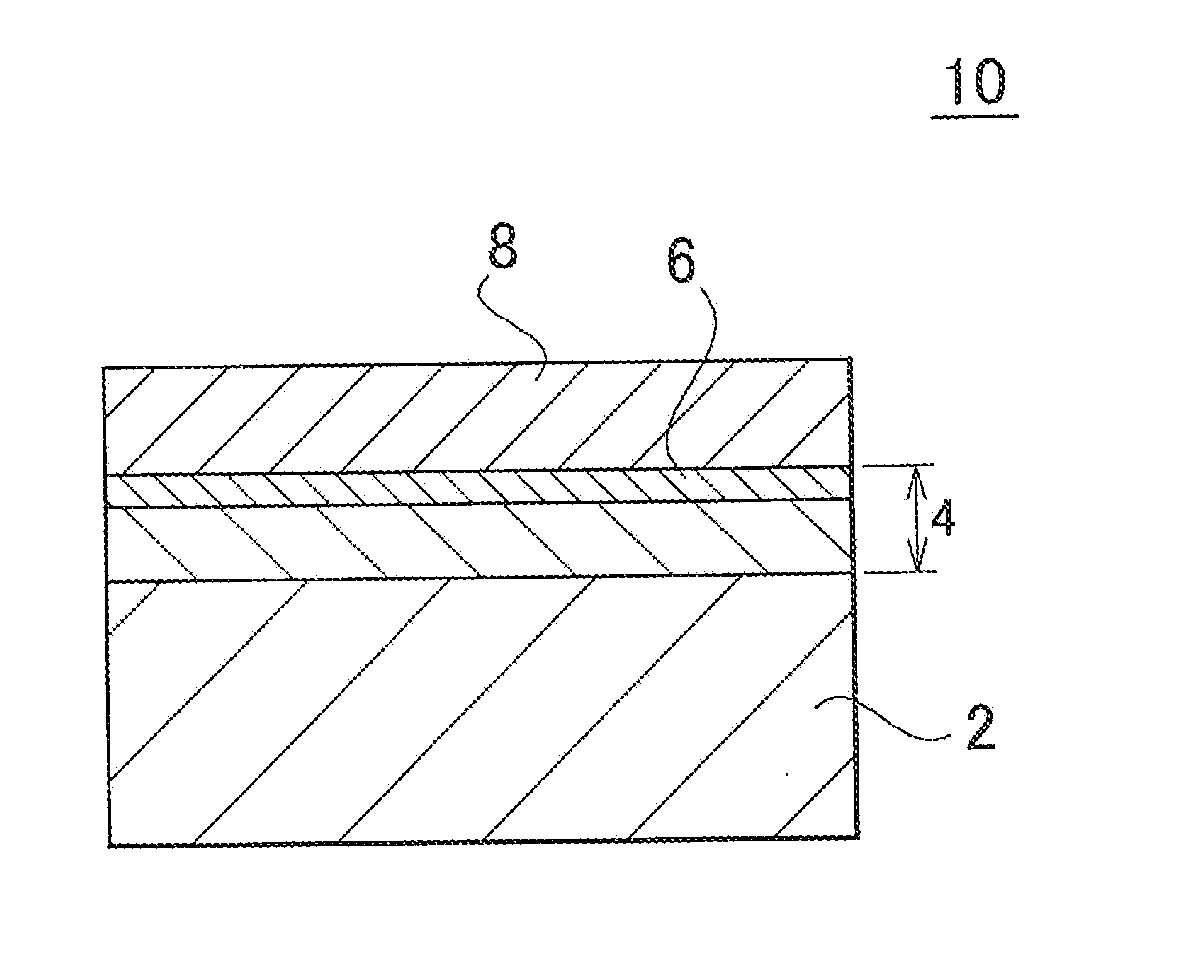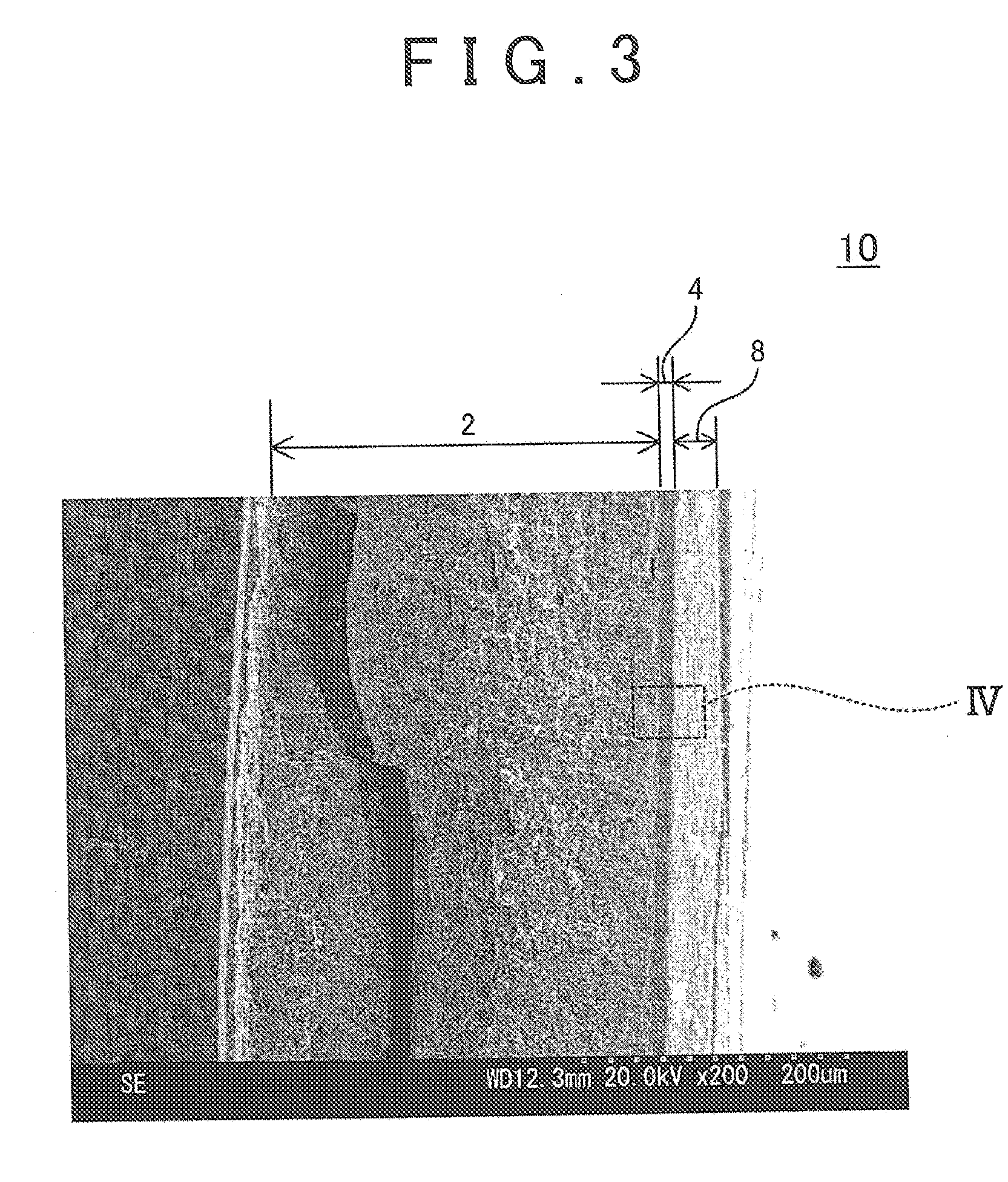Surface-treated mold and method of producing surface-treated mold
a technology of surface treatment and mold, which is applied in the direction of superimposed coating process, liquid/solution decomposition chemical coating,foundry moulding apparatus, etc., can solve the problem of inability to improve the adhesion between the carbon film and the metal layer, and achieve the effect of improving the adhesion, improving the adhesion, and improving the adhesion
- Summary
- Abstract
- Description
- Claims
- Application Information
AI Technical Summary
Benefits of technology
Problems solved by technology
Method used
Image
Examples
Embodiment Construction
[0022]As shown in FIG. 1, a surface-treated mold that is disclosed herein includes a mold 2, a metal layer 4, and a carbon film 8. The metal layer 4 has a superficial layer in which carbon (C) 6 is diffused. An embodiment of the surface-treated mold 10 is described in detail below.
[0023]The surface-treated mold 10 may be used as, for example, a mold for casting a metal material, a press die and a mold for molding a resin. In particular, the surface-treated mold 10 may be used in casting aluminum. Because the carbon film 8 is formed, the molded product (aluminum product) can be easily released from the surface-treated mold 10. Also, the fluidity of aluminum melt can be ensured. In addition, sticking of aluminum melt to a surface of the surface-treated mold 10 can be prevented.
[0024]The mold 2 may be made of SKD61 (alloy tool steel: JIS G4404), which is a hot-die steel. The metal layer 4 is made of nickel, chromium, tungsten, brass, or a compound thereof. These metals can satisfactori...
PUM
| Property | Measurement | Unit |
|---|---|---|
| thickness | aaaaa | aaaaa |
| thickness | aaaaa | aaaaa |
| temperature | aaaaa | aaaaa |
Abstract
Description
Claims
Application Information
 Login to View More
Login to View More - R&D
- Intellectual Property
- Life Sciences
- Materials
- Tech Scout
- Unparalleled Data Quality
- Higher Quality Content
- 60% Fewer Hallucinations
Browse by: Latest US Patents, China's latest patents, Technical Efficacy Thesaurus, Application Domain, Technology Topic, Popular Technical Reports.
© 2025 PatSnap. All rights reserved.Legal|Privacy policy|Modern Slavery Act Transparency Statement|Sitemap|About US| Contact US: help@patsnap.com



